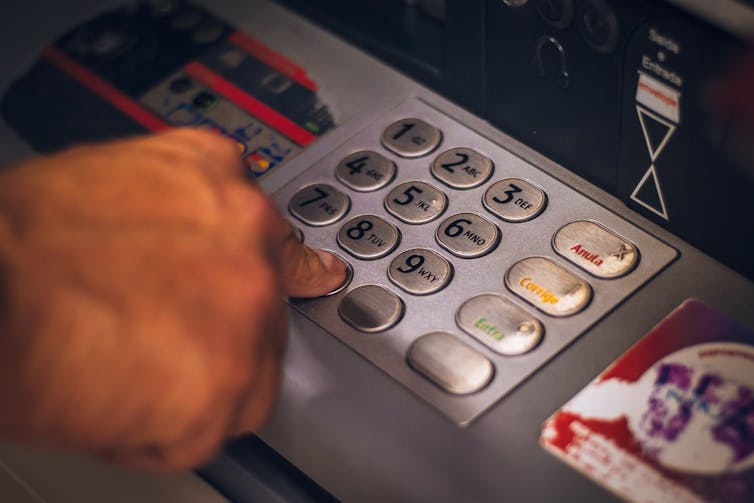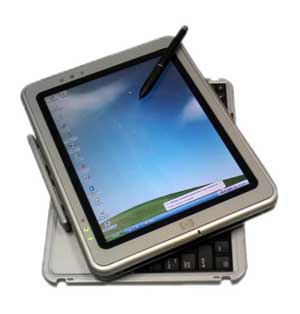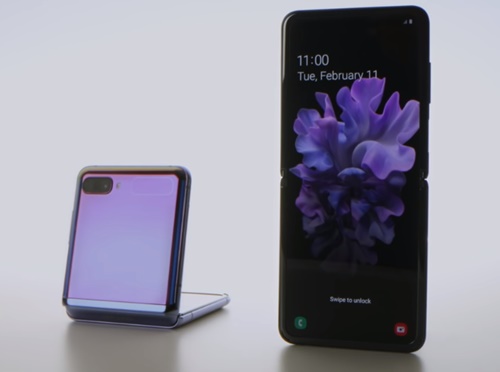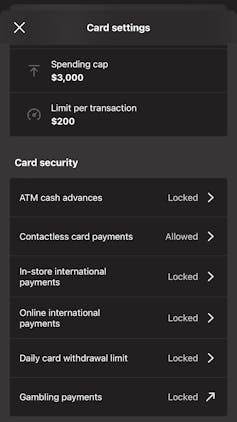Tuesday, 22 April 2025
Airtel to spot international spam calls; alert users in vernacular languages
Wednesday, 17 July 2024
50% of time Indian users pick up their phones out of habit: Report

Wednesday, 22 May 2024
Will New Zealand’s school phone ban work? Let’s see what it does for students’ curiosity

With the coalition government’s ban of student mobile phones in New Zealand schools coming into effect this week, reaction has ranged from the sceptical (kids will just get sneakier) to the optimistic (most kids seem okay with it).
In a world where nearly everyone has a smartphone, it’s to be expected nearly everyone will have an opinion. The trick is to sort the valid from the kneejerk, and not rush to judgement.
Anecdotally, schools that implemented the ban ahead of the deadline have reported positive changes in attention and learning. The head girl of Hornby High School in Christchurch said the grounds are now “almost louder during intervals and lunches”. Her principal said, “I wish we had done the phone ban five years ago.”
On the other hand, hard evidence in favour of banning phones in schools has been found to be “weak and inconclusive”. But the policy’s aim to create a “positive environment where young New Zealanders can focus on what matters most” is not without merit.
Above all, the policy raises a crucial question: is an outright ban the most effective approach to addressing the problem of digital distraction and its impact on education?
Connection and distraction
Since Monday, students have had to store their phones in bags or lockers during school hours. As in the pre-digital era, parents can now only contact their children through the school office.
The aim, according to the National Party’s original election promise, is to “eliminate unnecessary disturbances or distractions” and improve student achievement, which by various measures has declined over the past three decades.
While avoiding generalised assumptions, we know many young people can’t put their devices down, as both a recent Education Review Office report and a 2021 OECD survey concluded.
In one US survey in 2022, approximately one-third of teachers asked students to put away their phones five to ten times per class, while nearly 15% asked more than 20 times.
So, it’s hard to argue phones aren’t a distraction, or that social media-fuelled bullying and isolation don’t warrant critical examination of digital habits. At the same time, phones have their constructive uses, from organising schedules for the neurodivergent, to facilitating social interactions and learning.
No phone ban advocate is arguing that limiting phone use in schools is a silver bullet for related issues around cyberbullying, mental health and behavioural challenges. But the personal device’s capacity to distract remains a legitimate concern.
 The digital classroom presents challenges to developing critical thinking skills. Getty Images
The digital classroom presents challenges to developing critical thinking skills. Getty ImagesMeaningful digital engagement
The heart of the debate lies in education’s evolving landscape. The push to ban phones does not extend to digital devices in general, after all. Their utility in learning environments is well recognised.
But as we embrace artificial intelligence and other technological advances in education, we must also ask: at what point does reliance on these digital tools begin to erode critical thinking skills?
The future job market, filled with roles that do not yet exist, will undoubtedly require those skills. Therefore, distinguishing between meaningful digital engagement and detrimental distraction is crucial.
Perhaps the better question is: would fewer distractions create the opportunity for young people to be more curious about their learning?
Curiosity: the engine of critical thinking
Curiosity is essential for educational success, citizenship and media literacy in the digital age. But curiosity is stifled by distractions.
Education research is heading towards treating curiosity as a “provocation” – meaning we should, in effect, “dare” young people to be more curious. This involves encouraging mistakes, exploration – even daydreaming or being creatively bored.
All of this is challenging with the current level of distractions in the classroom. On top of that, many young people struggle to cultivate curiosity when digital media can provide instant answers.
Consider the distinction between two types of curiosity: “interest curiosity” and what has been termed “deprivation curiosity”.
Interest curiosity is a mindful process that tolerates ambiguity and takes the learner on their own journey. It’s a major characteristic of critical thinking, particularly vital in a world where AI systems are competing for jobs.
Deprivation curiosity, by contrast, is characterised by impulsivity and seeking immediate answers. Misinformation and confusion fuelled by AI and digital media only exacerbate the problem.
Making room for real life
Where does this leave the phone ban in New Zealand schools? There are some promising signs from students themselves, including in the OECD’s 2022 report on global educational performance:
On average across OECD countries, students were less likely to report getting distracted using digital devices when the use of cell phones on school premises is banned.
These early indications suggest phone bans boost the less quantifiable “soft” skills and vital developmental habits of young people — social interactions, experimentation, making mistakes and laughing. These all enhance the learning environment.
Real life experiences, with their inherent trials and errors, are irreplaceable avenues for applying critical thinking. Digital experiences, while valuable, cannot fully replicate the depth of human interaction and learning.
Finding the balance is the current challenge. As a 2023 UNESCO report advised, “some technology can support some learning in some contexts, but not when it is over-used”.
In the meantime, we should all remain curious about the potential positive impacts of the phone ban policy, and allow time for educators and students to respond properly. The real tragedy would be to miss the learning opportunities afforded by a less distracted student population.![]()
Patrick Usmar, Lecturer in Critical Media Literacies, Auckland University of Technology
This article is republished from The Conversation under a Creative Commons license. Read the original article.
Friday, 15 December 2023
How risky is it to give card details over the phone and how do I reduce the chance of fraud?

Cancelling your card is a hassle, but it’s the best way to prevent further funds being stolen from your account. Eduardo Soares/Unsplash
Paul Haskell-Dowland, Edith Cowan University and Ismini Vasileiou, De Montfort University
Paying for things digitally is so common, most of us think nothing of swiping or tapping our card, or using mobile payments. While doing so is second nature, we may be more reluctant to provide card details over the phone.
Merchants are allowed to ask us for credit card details over the phone – this is perfectly legal. But there are minimum standards they must comply with and safeguards to protect consumer data.
So is giving your card details over the phone any more risky than other transactions and how can you minimise the risks?
How is my card data protected?
For a merchant to process card transactions, they are expected to comply with the Payment Card Industry Data Security Standard. This is a set of security requirements designed to protect cardholder data and the trillions of dollars of transactions each year.
Compliance involves various security measures (such as encryption and access controls) together with strong governance and regular security assessments.
If the information stored by the merchant is accessed by an unauthorised party, encryption ensures it is not readable. That means stealing the data would not let the criminals use the card details. Meanwhile, access controls ensure only authorised individuals have access to cardholder data.
Though all companies processing cards are expected to meet the compliance standards, only those processing large volumes are subject to mandatory regular audits. Should a subsequent data leak or misuse occur that can be attributed to a compliance failure, a company can be penalised at levels that can escalate into millions of dollars.
These requirements apply to all card transactions, whether in person, online or over the phone. Phone transactions are likely to involve a human collecting the card details and either entering them into computer systems, or processing the payment through paper forms. The payment card Security Standards Council has detailed guides for best practice:
A policy should be in place to ensure that payment card data is protected against unauthorised viewing, copying, or scanning, in particular on desks.
Although these measures can help to protect your card data, there are still risks in case the details are misplaced or the person on the phone aren’t who they say they are.
Basic tips for safe credit card use over the phone
If you provide card details over the phone, there are steps you can take to minimise the chance you’ll become the victim of fraud, or get your details leaked.
1. Verify the caller
If you didn’t initiate the call, hang up and call the company directly using details you’ve verified yourself. Scammers will often masquerade as a well-known company (for example, an online retailer or a courier) and convince you a payment failed or payment is needed to release a delivery.
Before you provide any information, confirm the caller is legitimate and the purpose of the call is genuine.
2. Be sceptical
If you are being offered a deal that’s too good to be true, have concerns about the person you’re dealing with, or just feel something is not quite right, hang up. You can always call them back later if the caller turns out to be legitimate.
3. Use secure payment methods
If you’ve previously paid the company with other (more secure) methods, ask to use that same method.
4. Keep records
Make sure you record details of the company, the representative you are speaking to and the amount being charged. You should also ask for an order or transaction reference. Don’t forget to ask for the receipt to be sent to you.
Check the transaction against your card matches the receipt – use your banking app, don’t wait for the statement to come through.
Virtual credit cards
In addition to the safeguards mentioned above, a virtual credit card can help reduce the risk of card fraud.
You probably already have a form of virtual card if you’ve added a credit card to your phone for mobile payments. Depending on the financial institution, you can create a new credit card number linked to your physical card.
Some banks extend this functionality to allow you to generate unique card numbers and/or CVV numbers (the three digits at the back of your card). With this approach you can easily separate transactions and cancel a virtual card/number if you have any concerns.
What to do if you think your card details have been compromised or stolen?
It’s important not to panic, but quick action is essential:
call your bank and get the card blocked so you won’t lose any more money. Depending on your situation, you can also block/cancel the card through your banking app or website
report the issue to the police or other relevant body
monitor your account(s) for any unusual transactions
explore card settings in your banking app or website – many providers allow you to limit transactions based on value, restrict transaction types or enable alerts
you may want to consider registering for credit monitoring services and to enable fraud alerts.
So, should I give my card details over the phone?
If you want to minimise risk, it’s best to avoid giving card details over the phone if you can. Providing your card details via a website still has risks, but at least it removes the human element.
The best solution currently available is to use virtual cards – if anything goes wrong you can cancel just that unique card identity, rather than your entire card.![]()
Paul Haskell-Dowland, Professor of Cyber Security Practice, Edith Cowan University and Ismini Vasileiou, Associate Professor, De Montfort University
This article is republished from The Conversation under a Creative Commons license. Read the original article.
Monday, 7 August 2023
Indian government imposes restrictions on laptop and PC imports to boost local manufacturing


Thursday, 16 June 2022
Samsung M31(5F) Cable charging Problems and solutions
Wednesday, 6 January 2021
Samsung launches world's first foldable glass phone, Galaxy Z Flip

- Samsung on Wednesday launched its second foldable phone and the world's first foldable glass phone, the Galaxy Z Flip, which redefines smart phone with a pioneering a new mobile category.
- The Galaxy Z Flip, the company’s latest futuristic flagship, features a first-of-its-kind foldable glass display that allows the user to capture, share and experience content.
- “When folded, the Galaxy Z Flip is a stylish and compact palm-sized device. When unfolded, it’s a full-sized phone whose stunning, 6.7-inch Infinity Flex Display –Samsung’s first to feature a 21.9:9 aspect ratio – offers users truly seamless multitasking, a company website release stated.
- The key highlight of Galaxy Z Flip is its bendable glass as it is for the first time that a brand has used thin bendable glass in a phone. The Galaxy is also the first foldable phone from Samsung to feature a clamshell design.
- The device takes on the new Moto Razr foldable phone and will bring back memories of style associated with flip phones. For the first time in mobile phones, Samsung has used thin glass over a flexible display.
- The Galaxy Z Flip features Samsung’s proprietary bendable Ultra Thin Glass (UTG). This glass layer makes the device look sturdy and the screen less delicate. Also, repairing the display becomes easier as for deep scratches, just changing the glass layer instead of the entire display will do.
- The thin glass layer in Galaxy Z Flip prevents the crease from appearing more prominent. Like in the Galaxy Fold, the plastic screen tends to develop a crease at the place where it folds giving an ugly look. Having a glass layer on the screen prevents this crease (due to the fold) from appearing more prominent.
- Samsung Galaxy Z Flip comes with a 6.7-inch screen which folds in almost half. It also features a 6.7-inch FHD+ Dynamic AMOLED Infinity Flex Display with an aspect ratio of 21.9:9 and pixel density of 425 ppi.
- There is a small cover display with which you can change music, click selfies when the Galaxy Z Flip is folded
- There is a small cover display on the outside which measures 1.06-inch. You can use that small touch display to change music, click selfies when the Galaxy Z Flip is folded. You can get notifications as well on the cover display when the device is folded.
- Samsung Galaxy Z Flip can stay open at different angles like a laptop screen.
- The Galaxy Z Flip can stay open at a range of angles, like a laptop screen using the Hideaway Hinge system. There’s a new sweeper technology, which uses nylon fibers crafted by micro-height-cutting technology to repel dirt and dust.
- Samsung has worked with Google to design a new Flex mode for the phone. When the device is free-standing, the display automatically splits into two 4-inch screens so you can easily view images, content or videos on the top half of the display, and control them on the bottom half. For example, you can watch and navigate YouTube – stream on the top while searching for other videos, reading descriptions and writing comments on the bottom.
- Samsung Galaxy Z Flip is powered by a Qualcomm Snapdragon 855+ processor with 8GB of RAM and 256GB of internal storage and runs Android 10-based OneUI interface with backing from a 3,300mAh battery.
- Samsung Galaxy Z Flip comes with a total of three cameras
- The main display comes with a punch hole notch which hides the 10MP selfie camera. On the outside, there is a dual camera setup with a 12MP ultra wide sensor with F2.2 aperture and a 12MP wide-angle primary camera with F1.8 aperture, OIS, up to 8X digital zoom.
- The device can also be folded to 90-degrees and placed on a table to shoot videos or photos.
- The device comes with a capacitive fingerprint sensor on the side. There is no headphone jack and Samsung is providing USB Type-C earphones inside the box.Galaxy Z Flip is likely to be priced lower than Samsung’s first folding phone Galaxy Fold in India, although there is no official launch date yet. The device is priced at $1,380 in the US and is expected to cost less than Rs1,00,000 in India at that rate. Source: https://www.domain-b.com/
Sunday, 3 January 2021
Motorola launching moto g8 power lite in Bangladesh

Saturday, 2 January 2021
WhatsApp users make over 1.4bn phone calls on New Year’s Eve

Friday, 1 January 2021
Reliance Jio launches UPI payments for some, to expand service to all soon
- Reliance Jio Infocomm, the telecom arm of Mukesh Ambani-led reliance Industries Ltd (RIL) has now entered the payment services business with the launch of a UPI-powered payment system for customers.
- The service, which is currently available to select users, will soon be made available to all Jio subscribers, reports said without specifying the timeline.
- Jio will be the first telecom operator and the second payments bank to offer UPI-enabled services. The company already has a wallet service, called JioMoney.
- The company, according to the report, has integrated UPI services into its MyJio app. Jio subscribers using the service will get a virtual payment address (VPA) with @Jio at the end. The service just like from all other players requires a users mobile number and debit card number attached with a bank account.
- To recall, WhatsApp was in talks with NPCI to launch its own payments service before Jio, however, it did not get the final nod from NPCI. This was because of the uncertainty over data localisation and other regulatory hurdles.The entry of Jio in UPI payment services could be a big boost to NCPI whose UPI services grew 3 times in 2019 compared to the previous year. This year it is expected to surpass that considering the entry of Jio and the speculative entry of WhatsApp UPI Payments. Source: https://www.domain-b.com
Sunday, 26 July 2020
Apple launches new fix for unexpected shutdown of some iPhone6S models
Thursday, 16 July 2020
GST rate for mobile phones to go up to 18%
Saturday, 4 July 2020
Samsung launches world's first foldable glass phone, Galaxy Z Flip

- The Galaxy Z Flip, the company’s latest futuristic flagship, features a first-of-its-kind foldable glass display that allows the user to capture, share and experience content.
- “When folded, the Galaxy Z Flip is a stylish and compact palm-sized device. When unfolded, it’s a full-sized phone whose stunning, 6.7-inch Infinity Flex Display –Samsung’s first to feature a 21.9:9 aspect ratio – offers users truly seamless multitasking, a company website release stated.
- The key highlight of Galaxy Z Flip is its bendable glass as it is for the first time that a brand has used thin bendable glass in a phone. The Galaxy is also the first foldable phone from Samsung to feature a clamshell design.
- The device takes on the new Moto Razr foldable phone and will bring back memories of style associated with flip phones. For the first time in mobile phones, Samsung has used thin glass over a flexible display.
- The Galaxy Z Flip features Samsung’s proprietary bendable Ultra Thin Glass (UTG). This glass layer makes the device look sturdy and the screen less delicate. Also, repairing the display becomes easier as for deep scratches, just changing the glass layer instead of the entire display will do.
- The thin glass layer in Galaxy Z Flip prevents the crease from appearing more prominent. Like in the Galaxy Fold, the plastic screen tends to develop a crease at the place where it folds giving an ugly look. Having a glass layer on the screen prevents this crease (due to the fold) from appearing more prominent.
- Samsung Galaxy Z Flip comes with a 6.7-inch screen which folds in almost half. It also features a 6.7-inch FHD+ Dynamic AMOLED Infinity Flex Display with an aspect ratio of 21.9:9 and pixel density of 425 ppi.
- There is a small cover display with which you can change music, click selfies when the Galaxy Z Flip is folded
- There is a small cover display on the outside which measures 1.06-inch. You can use that small touch display to change music, click selfies when the Galaxy Z Flip is folded. You can get notifications as well on the cover display when the device is folded.
- Samsung Galaxy Z Flip can stay open at different angles like a laptop screen.
- The Galaxy Z Flip can stay open at a range of angles, like a laptop screen using the Hideaway Hinge system. There’s a new sweeper technology, which uses nylon fibers crafted by micro-height-cutting technology to repel dirt and dust.
- Samsung has worked with Google to design a new Flex mode for the phone. When the device is free-standing, the display automatically splits into two 4-inch screens so you can easily view images, content or videos on the top half of the display, and control them on the bottom half. For example, you can watch and navigate YouTube – stream on the top while searching for other videos, reading descriptions and writing comments on the bottom.
- Samsung Galaxy Z Flip is powered by a Qualcomm Snapdragon 855+ processor with 8GB of RAM and 256GB of internal storage and runs Android 10-based OneUI interface with backing from a 3,300mAh battery.
- Samsung Galaxy Z Flip comes with a total of three cameras
- The main display comes with a punch hole notch which hides the 10MP selfie camera. On the outside, there is a dual camera setup with a 12MP ultra wide sensor with F2.2 aperture and a 12MP wide-angle primary camera with F1.8 aperture, OIS, up to 8X digital zoom.
- The device can also be folded to 90-degrees and placed on a table to shoot videos or photos.
- The device comes with a capacitive fingerprint sensor on the side. There is no headphone jack and Samsung is providing USB Type-C earphones inside the box.
- Galaxy Z Flip is likely to be priced lower than Samsung’s first folding phone Galaxy Fold in India, although there is no official launch date yet. The device is priced at $1,380 in the US and is expected to cost less than Rs1,00,000 in India at that rate.Source: https://www.domain-b.com/
Saturday, 27 June 2020
GST rate for mobile phones to go up to 18%
- The fitment committee of the Goods and Services Tax Council has recommended calibration of the GST rate structure to correct the inverted duty structure on various items like mobile phones, footwear, textiles and fertilizers.
- Accordingly, the GST council has recommended a hike in the GST rate on mobile phones and specified parts, which currently attract 12 per cent, to 18 per cent.
- The Council also deliberated on the issue of calibrating the rate of other items for removing inversion in future meetings with further consultation and examination of issue.
- GST rate on all types of matches (handmade and other than handmade) has been rationalised to 12 per cent (from 5 per cent on handmade matches and 18 per cent on other matches). This would address the classification issues. This issue was deliberated earlier in the 37th meeting and was pending for decision.
- GST rate on maintenance, repair and overhaul (MRO) services in respect of aircraft has been reduced from 18 percent to 5 per cent with full ITC and to change the place of supply for B2B MRO services to the location of recipient.
- This change is likely to assist in setting up of MRO services in India. Domestic MRO will also get protection due to 5 per cent tax paid under the Customs Tariff Act, 1975 on most imported goods (sent abroad for repairs) as this tax is not available as credit.
- The Council has proposed to issue notifications giving effect to these recommendations on 1 April 2020. Source: %
Monday, 22 June 2020
GST rate for mobile phones to go up to 18%
- The fitment committee of the Goods and Services Tax Council has recommended calibration of the GST rate structure to correct the inverted duty structure on various items like mobile phones, footwear, textiles and fertilizers.
- Accordingly, the GST council has recommended a hike in the GST rate on mobile phones and specified parts, which currently attract 12 per cent, to 18 per cent.
- The Council also deliberated on the issue of calibrating the rate of other items for removing inversion in future meetings with further consultation and examination of issue.
- GST rate on all types of matches (handmade and other than handmade) has been rationalised to 12 per cent (from 5 per cent on handmade matches and 18 per cent on other matches). This would address the classification issues. This issue was deliberated earlier in the 37th meeting and was pending for decision.
- GST rate on maintenance, repair and overhaul (MRO) services in respect of aircraft has been reduced from 18 percent to 5 per cent with full ITC and to change the place of supply for B2B MRO services to the location of recipient.
- This change is likely to assist in setting up of MRO services in India. Domestic MRO will also get protection due to 5 per cent tax paid under the Customs Tariff Act, 1975 on most imported goods (sent abroad for repairs) as this tax is not available as credit.
- The Council has proposed to issue notifications giving effect to these recommendations on 1 April 2020. Source: https://www.domain-b.com/
GST rate for mobile phones to go up to 18%
- The fitment committee of the Goods and Services Tax Council has recommended calibration of the GST rate structure to correct the inverted duty structure on various items like mobile phones, footwear, textiles and fertilizers.
- Accordingly, the GST council has recommended a hike in the GST rate on mobile phones and specified parts, which currently attract 12 per cent, to 18 per cent.
- The Council also deliberated on the issue of calibrating the rate of other items for removing inversion in future meetings with further consultation and examination of issue.
- GST rate on all types of matches (handmade and other than handmade) has been rationalised to 12 per cent (from 5 per cent on handmade matches and 18 per cent on other matches). This would address the classification issues. This issue was deliberated earlier in the 37th meeting and was pending for decision.
- GST rate on maintenance, repair and overhaul (MRO) services in respect of aircraft has been reduced from 18 percent to 5 per cent with full ITC and to change the place of supply for B2B MRO services to the location of recipient.
- This change is likely to assist in setting up of MRO services in India. Domestic MRO will also get protection due to 5 per cent tax paid under the Customs Tariff Act, 1975 on most imported goods (sent abroad for repairs) as this tax is not available as credit.
- The Council has proposed to issue notifications giving effect to these recommendations on 1 April 2020. Source: https://www.domain-b.com/
Sunday, 21 June 2020
Reliance Jio launches UPI payments for some, to expand service to all soon
- Reliance Jio Infocomm, the telecom arm of Mukesh Ambani-led reliance Industries Ltd (RIL) has now entered the payment services business with the launch of a UPI-powered payment system for customers.
- The service, which is currently available to select users, will soon be made available to all Jio subscribers, reports said without specifying the timeline.
- Jio will be the first telecom operator and the second payments bank to offer UPI-enabled services. The company already has a wallet service, called JioMoney.
- The company, according to the report, has integrated UPI services into its MyJio app. Jio subscribers using the service will get a virtual payment address (VPA) with @Jio at the end. The service just like from all other players requires a users mobile number and debit card number attached with a bank account.
- To recall, WhatsApp was in talks with NPCI to launch its own payments service before Jio, however, it did not get the final nod from NPCI. This was because of the uncertainty over data localisation and other regulatory hurdles.
- The entry of Jio in UPI payment services could be a big boost to NCPI whose UPI services grew 3 times in 2019 compared to the previous year. This year it is expected to surpass that considering the entry of Jio and the speculative entry of WhatsApp UPI Payments. Source:https://www.domain-b.com
Wednesday, 17 June 2020
GST rate for mobile phones to go up to 18%
- The fitment committee of the Goods and Services Tax Council has recommended calibration of the GST rate structure to correct the inverted duty structure on various items like mobile phones, footwear, textiles and fertilizers.
- Accordingly, the GST council has recommended a hike in the GST rate on mobile phones and specified parts, which currently attract 12 per cent, to 18 per cent.
- The Council also deliberated on the issue of calibrating the rate of other items for removing inversion in future meetings with further consultation and examination of issue.
- GST rate on all types of matches (handmade and other than handmade) has been rationalised to 12 per cent (from 5 per cent on handmade matches and 18 per cent on other matches). This would address the classification issues. This issue was deliberated earlier in the 37th meeting and was pending for decision.
- GST rate on maintenance, repair and overhaul (MRO) services in respect of aircraft has been reduced from 18 percent to 5 per cent with full ITC and to change the place of supply for B2B MRO services to the location of recipient.
- This change is likely to assist in setting up of MRO services in India. Domestic MRO will also get protection due to 5 per cent tax paid under the Customs Tariff Act, 1975 on most imported goods (sent abroad for repairs) as this tax is not available as credit.
- The Council has proposed to issue notifications giving effect to these recommendations on 1 April 2020. Source: https://www.domain-b.com
Sunday, 22 November 2015
The next phone Apple iPhone 7 He will know greater intensity pressing
- Four inch model? At first yes, then no, then yes. Now, Interesting is the assumption that the new series was getting marking 7, due to the large jump in the equipment. Most speculation had not previously been assumed that Apple stays true to the philosophy of marking successive generations, and this fall will be introduced iPhone 6s and 6s Plus, iPhone 7. Putting a smaller and cheaper model, which would be equipped with Apple A8 chipset and four-inch display, expected. Initial speculation had earlier refused server information Wall Street Journal. What is the contrary assumptions agree, is deploying Force Touch. It is for users of the products with the logo of apples unknown concept, the manufacturer used it not only to the latest MacBook, but also watches Watch. Initially it was assumed that the next iPhone screen with the conveniences you recognize the power of touch and accordingly instruct the user to respond. Kuo says that the display of the phone will work differently than the new MacBook touchpad, which is able to detect the intensity of being pressed. He's talking about a kind of indirect detection, pressure contact of location and size of land that the finger touches the panel. This could mean that the UI system could work necessary with different sized icons, maybe there will be widgets. According to Taiwan's Economic Daily News server by sensor panels for the new iPhone TPK provided by the company that supplies them for display expected watches equipped with the same technology.
- ForceTouch only for the larger of the next iPhone? Although earlier ForceTouch inflected with both the next iPhone is currently only associated with model 6s Plus (Plus 7), the basic model could thus be deprived of this news. Such a move would be too incompatible with the philosophy of Apple. Model 6 Plus is compared to the "top six" in addition to a larger display with higher resolution optical actually only stabilize the camera. Therefore useful but not essential thing. ForceTouch technology, which would bring a new dimension of control, on the contrary, an important element of the outfit was admittedly a smaller basic model would be instantly perceived as worse. The difference between the two devices would be more open. Version 6s (7) would suddenly not only the most compact but also the most difficult equipment. Sami is therefore rather tend to variant that ForceTouch get both the size of the next version of the iPhone. Appointed Taiwanese newspaper also mentions price range sensor ForceTouch. In the case of the watch Watch Apple said the company pays for TPK sensor for single panel about four to five US dollars (100-125 dollars). iPhone 6s Plus (Plus 7), however, will have a considerably larger screen than a watch (5.5 vs. 1.5 and 1.65 inches), which has also correspond to the price between 13-14 US dollars. The current generation iPhone (6/6 Plus) was introduced last September 19 and in the very next last quarter of record producer sold more than 74 million iPhones ( more in an earlier article ). Interest in news is so despite the high price of standard enormous. The basic version with 16 gigabytes in the Czech Republic began to sell for 18,390 thousand, in early March but Apple reacted to the weakening of the dollar against the local currency and prices jumped by about 15 percent. Source: Article




